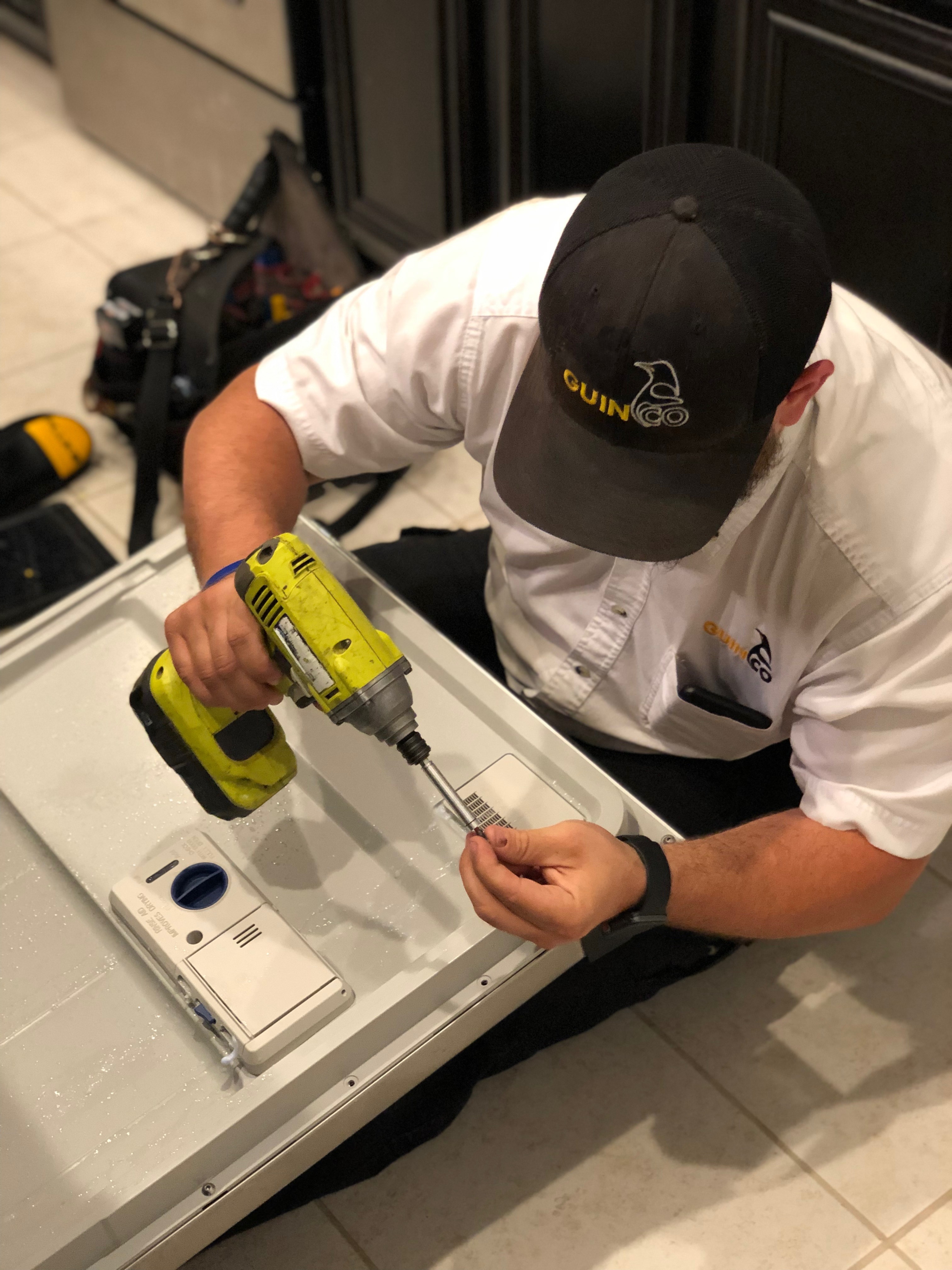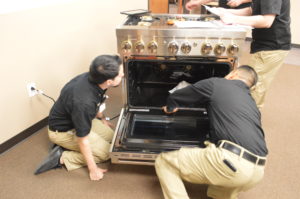One of the most common complaints we receive in regards to dishwasher trouble involves a dishwasher that’s flooding, or won’t drain after a cycle. A dishwasher not working means that without warning, you’re now encumbered with extra chores, and if that sitting waters stays there for long, you’re going to have a nasty smelling kitchen on your hands. At Guinco, we want to do everything we can to stop that from happening, so here are four simple, at-home tips you can use to try to restore your dishwasher to working order.
Run an Empty Cycle
The first thing you should attempt in response to a sitting water problem is running a washer cycle with no soap or dishes. This ensure that no additional food gunk will end up in a drain, and if more standing water is added, it won’t be filled with food. Oftentimes, this is all it takes to get standing water to pass. Unfortunately, many people are afraid of adding more water to the problem, but ultimately there’s no other way of knowing if you’ve solved the problem.
Clean the Drain Basket
As one would assume, standing water means that there is a drainage issue at some point, and there is no better place to start inspecting than the drain basket. This is located, typically, at either the base of the spray arms or off to the side of the dishwasher. This is where this task gets a little gross. Thoroughly clean the drain of food blockage and slime. This is similar to the occasional drain cleaning you have to do in a shower. Typically, standing water signals a severely clogged drain basket. Once you’ve cleaned it, try an empty wash cycle, and see if the problem is resolved.
Inspect the Drain Hose for Kinks
Depending on your machine’s model, the drain hose access panel could be in one of a few different places. Typically located on the front of the machine, below the door hinges, simply remove the panel, and the hose should be exposed. Inspect the entire length of the exposed hose, and look for any kinks or pinches. If you located any, carefully work the kink out of the hose, then replace the panel and run an empty cycle.
If Connected to a Garbage Disposal, Inspect that Connection
If your dishwasher drain hose is in fact connected to a garbage disposal, there is a decent chance that it’s the culprit of your drainage issues. A large amount of people don’t know the limitations of a garbage disposal, and this ignorance tends to cause sink drainage issues, as well as dishwasher drainage issues. First, it’s always a good idea to unplug your garbage disposal before doing any work around it. Once you’ve done that, carefully disconnect the hose from the disposal. Using a long screwdriver, or similar implement, attempt to remove any and all blockages from the hose, as well as the disposal itself. Once those are cleared, reattach the hose to the disposal, plug the disposal in, and turn it on briefly, to clear out anything that was left. As you probably guessed, you should now run an empty cycle, and check the results.
We sincerely hope these tips cleared up your dishwasher drain pain, but if the problem persists it’s likely due to a more serious problem. Don’t hesitate to reach out to us at Guinco.com/Contact, or over the phone at 844.3.GUINCO. As always, Thank You For Letting Our Family Help Yours.


